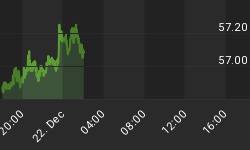JP Morgan's earnings were strong, as I suggested yesterday they probably would be (the stock fell, though, on news that they, and BofA, and a number of other firms will be forced to pay foreclosure "victims"). Retail Sales were good-to-strong as well, at 0.8% ex-autos and an upward revision to last month. The Beige Book was upbeat as well.
So, for a day, stocks managed to skitter to unchanged. The fact that they were only unchanged speaks to valuation levels. Bonds rallied a smidge to 3.47%, and TIPS rallied further as well. Breakevens declined slightly.
Oil recovered above $107, somewhat weakly. But gasoline jumped 2.3%. Over the last month, Crude is up 5.7% while gasoline is up 9.4% (17.0% and 32.4% over the last 90 days). There was no big mystery about gasoline's outperformance today. The weekly DOE inventory numbers showed the largest weekly gasoline draw since 1998, at 7 million barrels (see Chart). Analysts were expecting a 1mm barrel draw. There are occasionally surprises at this time of year associated with the shifting of production from winter gasoline to summer gasoline, but the main draws usually occur near the end of the summer driving season in August.

Biggest weekly gasoline draw in more than a decade
Either way, while this is only one week it is something to note because retail gasoline prices suggest that there may be something to the supply/demand dynamic here. The chart below shows the DOE Retail Average Price for Regular Unleaded, nationwide. As you can see, retail prices at the pump are nearly as high as they were in 2008, when oil prices were much higher.

Prices at the pump are still climbing!
Gasoline prices are more directly linked to inflation and to spending (and consumer confidence) than are Crude Oil prices. Yesterday I noted that I didn't think oil prices were "overbought," and relative to gasoline prices they certainly aren't. And gasoline prices, while they may look technically overbought, are hard to fade when the rising prices are accompanied by steep draws in physical inventories. The absolute level of inventories is still pretty high, to be sure (see Chart below), but this can change pretty quickly.

The level of gasoline inventories is still nothing to get concerned about.
It is also fair to note that there is an element of circularity here as well. When inventories are low, it tends to help produce higher prices (obviously) and a vulnerability to disruption that can lead to lengthy upper "tails." But when prices are high, there is also an incentive to keep inventories low, because it ties up more capital. It isn't clear which effect is predominant at any time. One positive thing we can probably be confident about is that at this level of inventories, we're not yet worried about minor disruptions causing a price spike.
But speaking of prices, the PPI and CPI will be released over the next couple of days. I always pooh-pooh PPI, because it isn't very predictive of anything (certain elements of it are predictive of certain elements of CPI, but a lot of big-wig economist predictions based on "pipeline pressure in core Crude Goods" have fallen on the rocks over the years). Still, the year-on-year headline PPI should pop to above 6% tomorrow and produce "highest level since 2008" headlines (in 2008 PPI reached 9.9%) which might pressure bonds and stocks as well. Core PPI is still below 2%, compared with 4.7% in 2008, but that doesn't make for as good a headline. Again, none of this is very important. I'll pay more attention to the weekly Claims figures (Consensus: 380k), but the main event is still on Friday with the CPI. I'll have much more to say on that tomorrow.















